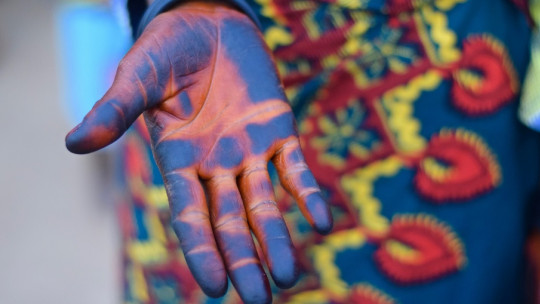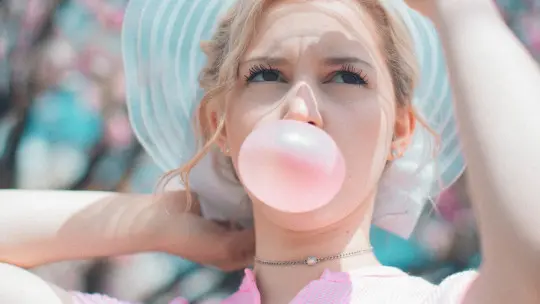
The color lilac is one of the shades of violet, which is generated by the combination of the latter with the color white. Violet, in turn, can be obtained by combining a cold color (blue) and a warm color (red).
Both violet and lilac have been linked to psychological and cultural meanings different, which we will see developed below.
Description and characteristics of this color
The color lilac gets its name from the botanical species syringa vulgaris, which includes flowers whose distinctive characteristic is this color. It includes a wide range of shades ranging from light lilac to common lilac, including French lilac, mauve and lavender.
Likewise, lilac can be obtained by the combination of violet color with white color, which is why it is considered one of the many types of violet that exist. Other derivatives of violet are, for example, purple, purple or burgundy. Each one varies according to the intensity of the violet itself.
For its part, violet is considered one of the primary colors by the RGB System (Red, Green, Blue), which is the chromatic analysis developed by Isaac Newton through the decomposition of sunlight. This decomposition was obtained by means of a glass prism with various wavelengths, which achieved a chromatic circle with the colors violet, indigo, blue, green, yellow, orange and red.
For the RGB system, white light can be recreated by adding three colored lights: green, blue-violet and red-orange. These lights are those that cannot be obtained by combining others, which is why they are considered primary colors. This system is the one that has been used to analyze light, non-pigmentary properties of each colour.
To analyze its pigment properties (which has made it possible to systematize colors in inks), another system known as CMYK (Cyan, Magenta, Yellow, Key) was developed. In this system the colors that cannot be obtained by mixing others are blue, yellow and red (the primary colors); with the addition of black as a base pigment. For CMYK, violet is a secondary color, which emerges from the combination of red and blue. For its part, the lilac color is generated by the combination of violet with white, which is why it is considered one of the many shades of the former.
How do we perceive lilac?
In the retina of the human eye, violet and lilac are perceived by the simultaneous excitation of the blue cones and the red cones, located in the fovea (in the center of the macula lutea of the eye). These cones act as trichromatic receptors through the optic nerve, which is responsible for communicating chromatic messages to the brain.
Through a wavelength of between 380 and 420 nm (which unfolds upon exposure to the chromatic stimulus), blue and red lights are generated, which finally allow us to perceive violet as well as its different shades.
The above constitutes one of the descriptions of the color processing mechanisms offered by physiology. However, psychology and anthropology have also explained to us what some of the individual and cultural meanings of colors are. Let’s look at some of them below.
Meaning of lilac in psychology
For psychology, color is closely related to emotions. This is because, after perceiving the chromatic ranges through the optic nerve, the rest of our system activates different emotions related to our personal and sociocultural experiences with each color.
For example, for color psychology, cold colors, such as blue, are par excellence those that transmit feelings of tranquility, while hot colors, such as red, are those that generate excitement. In itself, as Eva Heller (2004) has proposed, each color can change its meaning depending on how it is mixed with other colors.
In this sense, the same author proposes that the color lilac has been related in Western culture to an ambiguous image about cosmetics, vanity and women’s maturity. In other shades, the color violet can be related to frivolity and at the same time with originality.
Likewise, being in one of the lowest shades of violet, the lilac color has been associated with the tranquility, the sweetness, the warmth, the moderation and the little impact. It is not usually related to negative behaviors, on the contrary, it is associated with sensitivity, empathy, kindness, balance and maturity.
All of the above has served to use colors strategically according to the sensations and emotions they want to provoke. This has impacted different spheres, ranging from psychotherapy to architecture and marketing. For example, it was the color representative of the extravagance of the art nouveau.
Cultural meanings of lilac
Colors not only activate perceptions and emotional experiences at an individual level, but can mobilize different social codes depending on how they have been used culturally. Even within the same culture the meaning of colors and their shades can vary. For example, In Europe the color purple implies penitence, although the color violet in light tones is related to humility.
In the same sense, one of the first classifications of color according to its social meanings was made by Goethe, who related the color violet, on a moral level, to what is useless or what is profitable. On an intellectual level he related it to fantasy and the unreal. In terms of social status he identifies it with artists, and at the level of cultural traditions with spirituality, magic and theology.
In fact, for the church, violet and its different shades have symbolized love and truth, although in constant tension with passion and suffering. In fact, they are the colors associated with representative seasons such as Lent and Advent, which are celebrated before Easter and before Christmas respectively. On the same dates, these colors are used in the bishops’ habits.
On the other hand, In South America the color purple was related to joy, because it was found in abundance in different flowers and crops throughout the year. Finally, in recent times, the color violet has been associated with feminist movements in different parts of the world.








